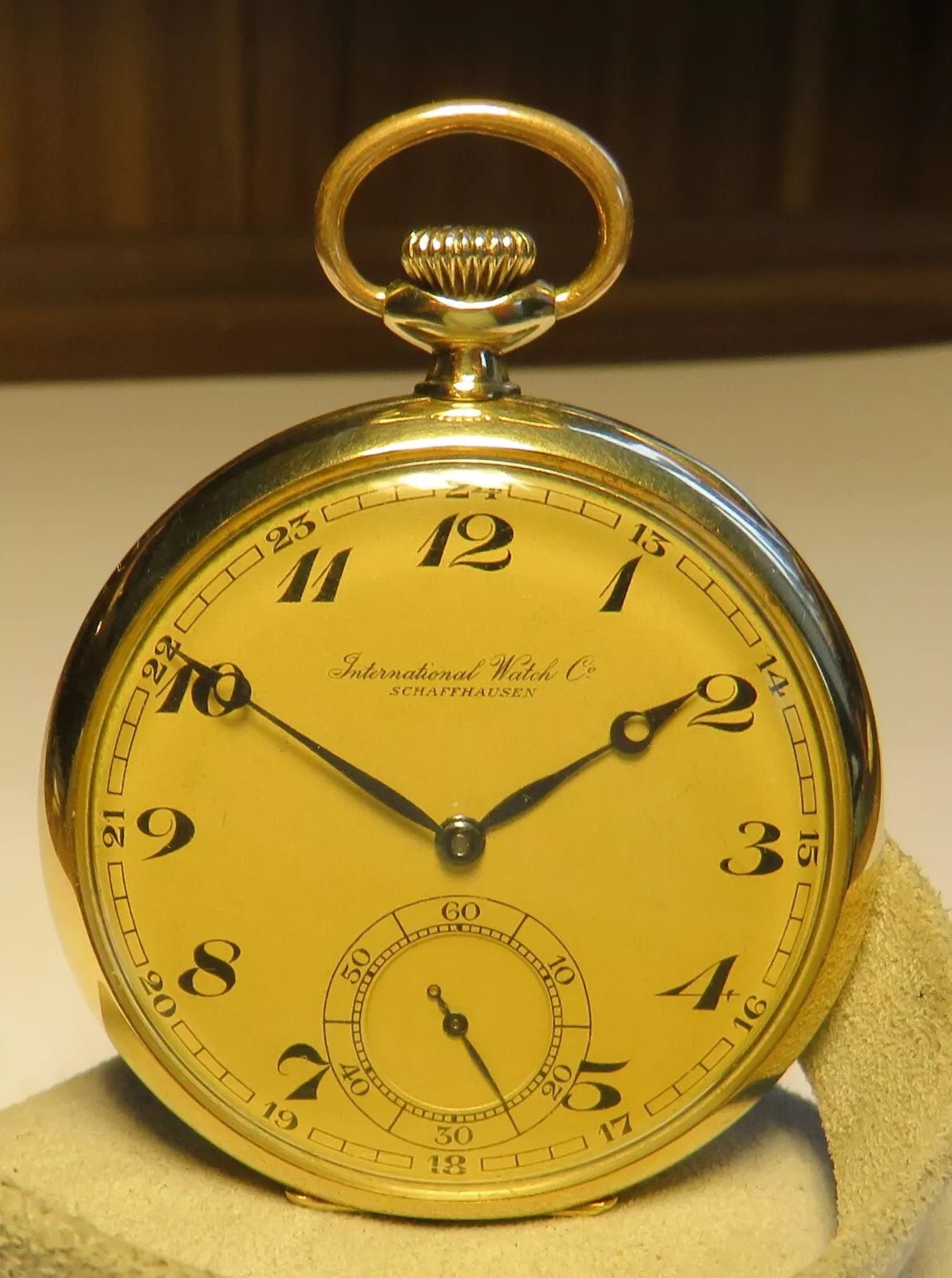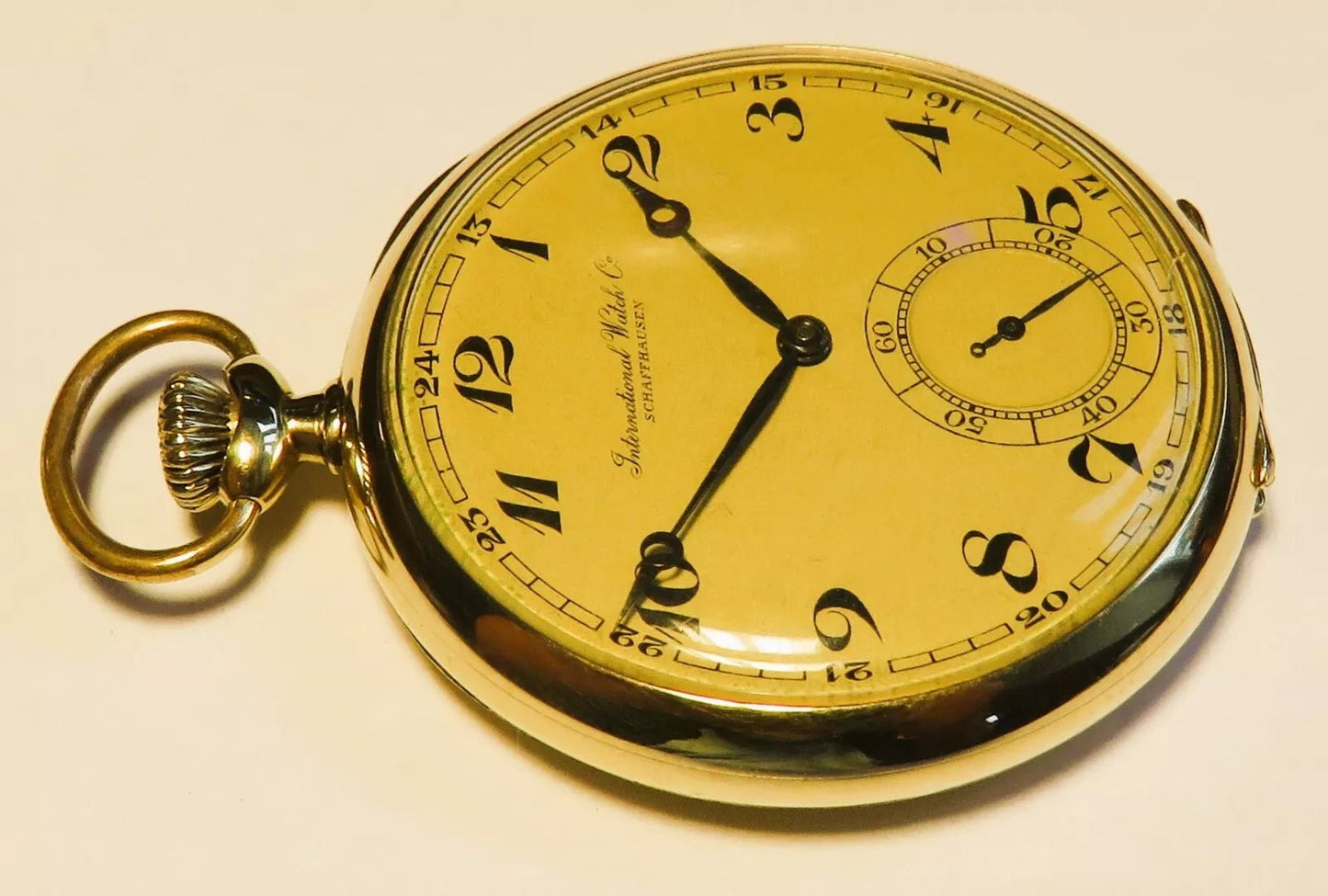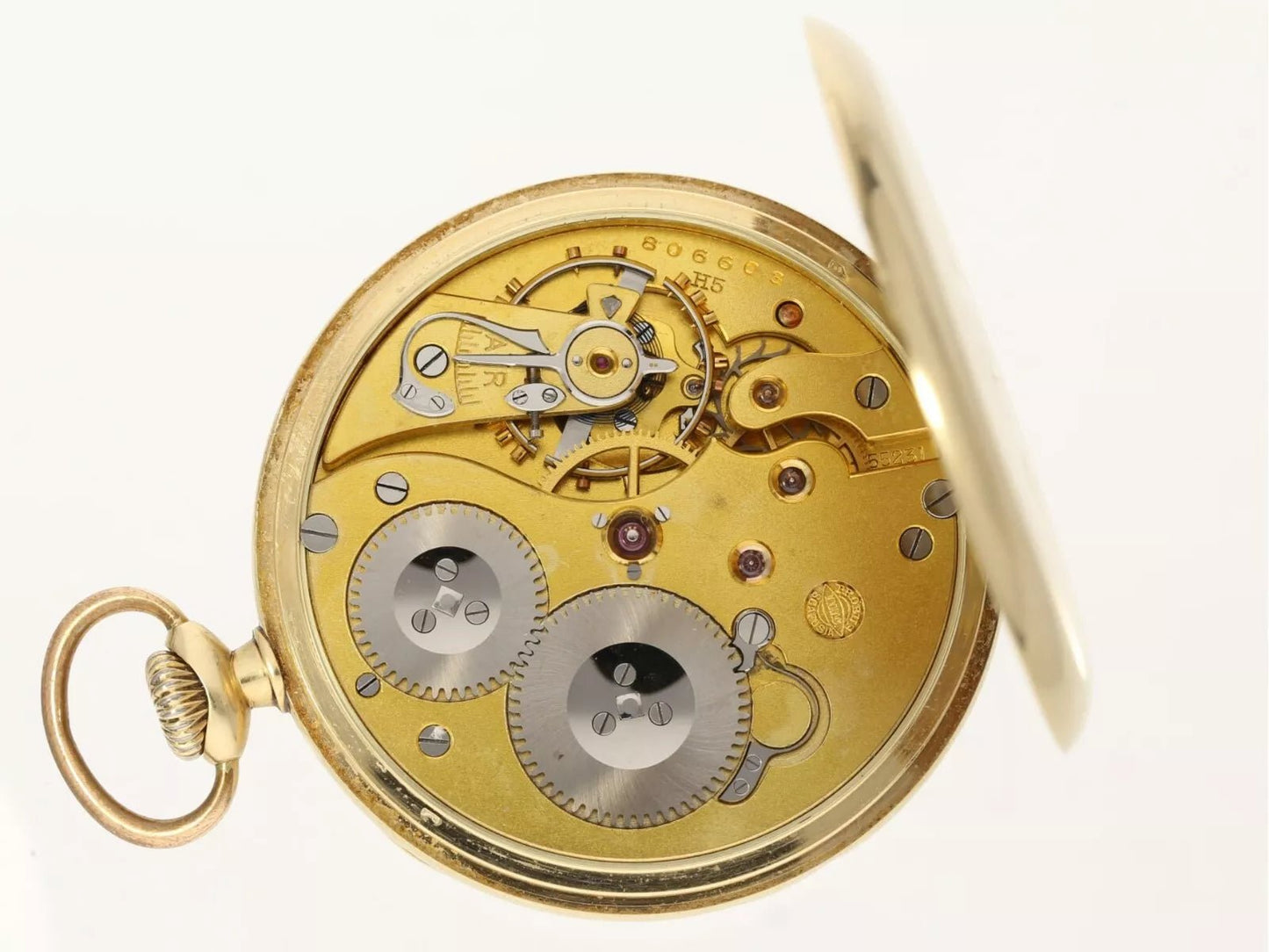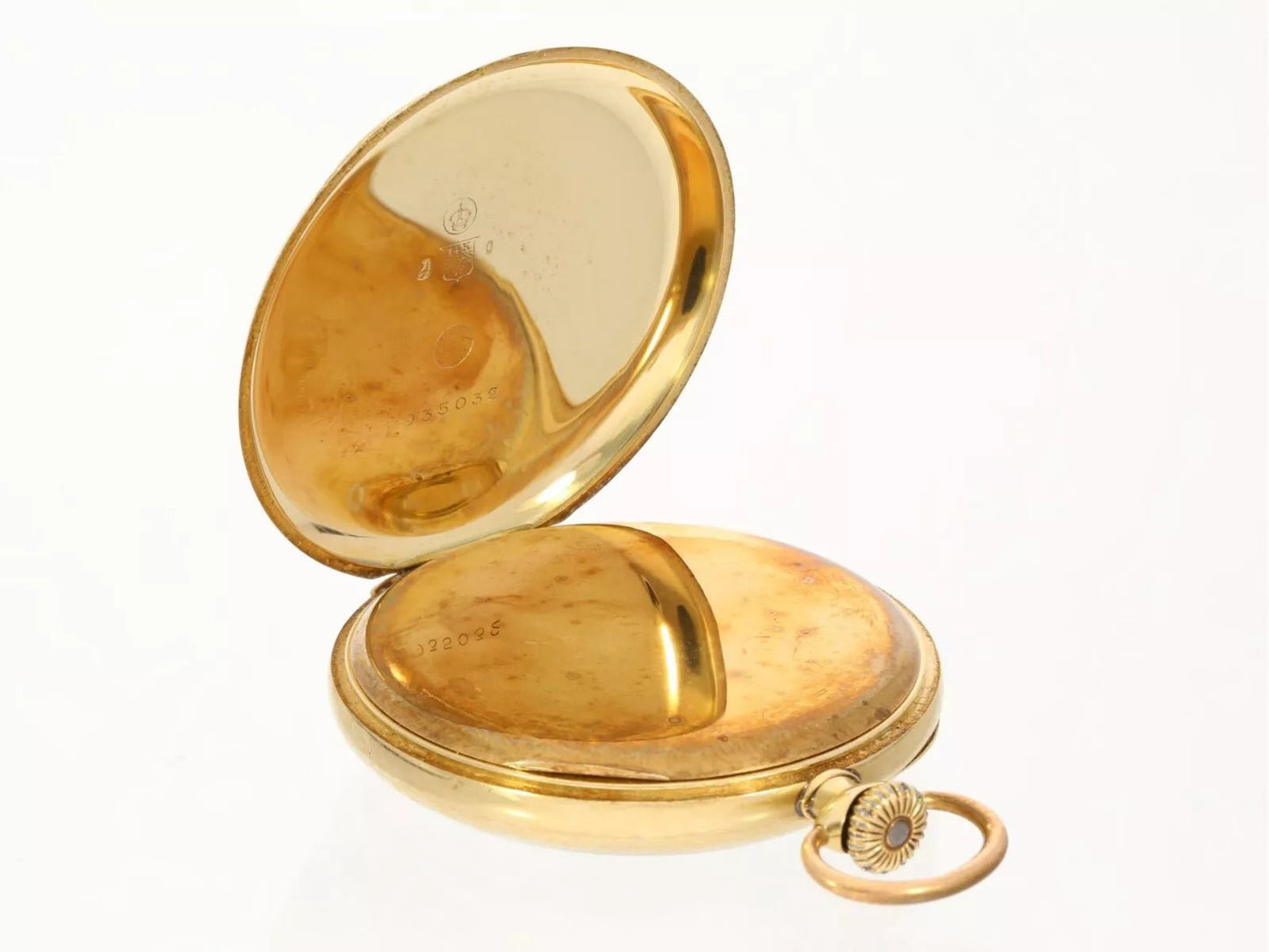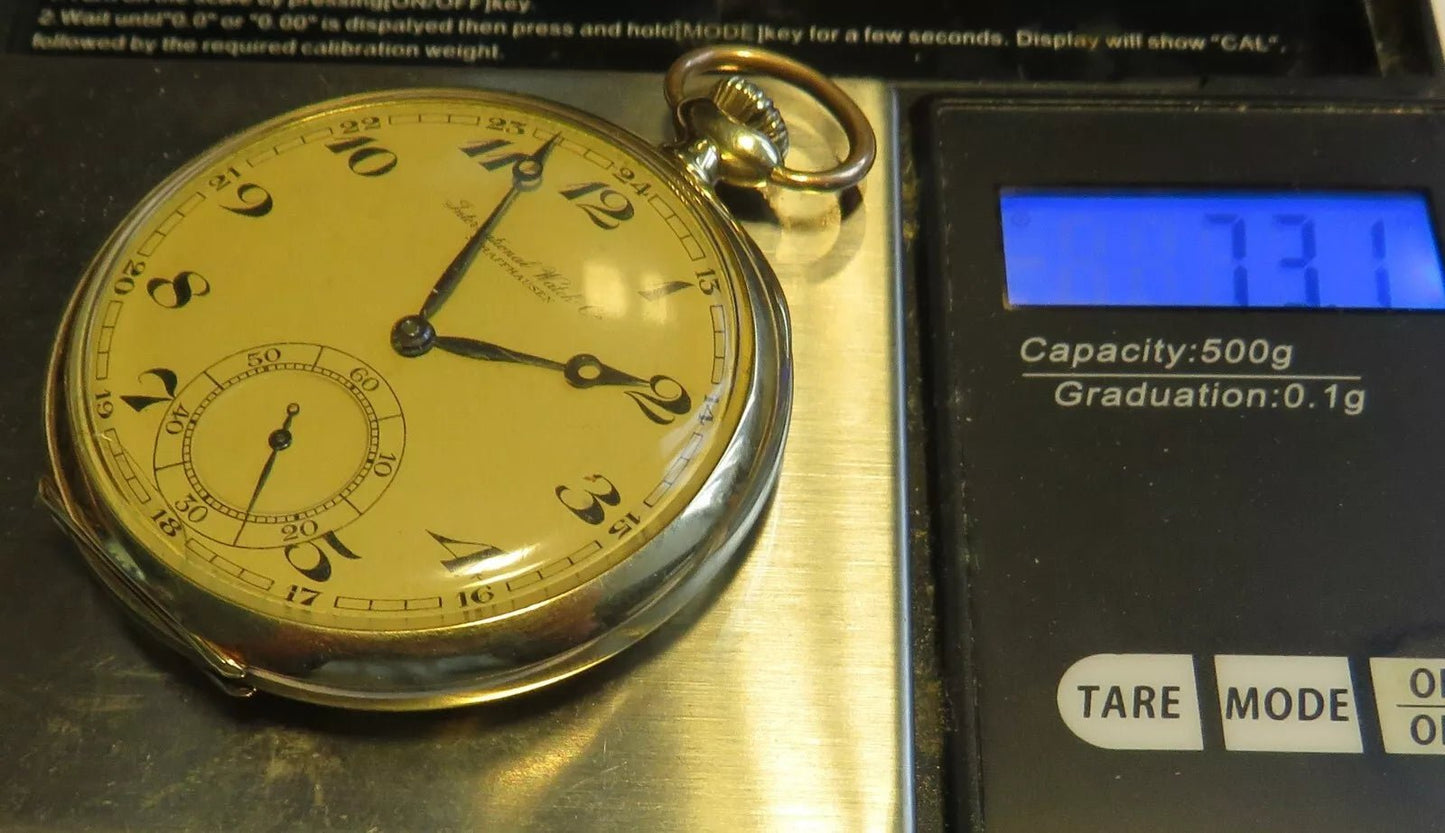Sammler-Uhren
IWC Schaffhausen 14K 585 Gold Luxury Pocket Watch Lepine Men's HTU Swan Neck
IWC Schaffhausen 14K 585 Gold Luxury Pocket Watch Lepine Men's HTU Swan Neck
Couldn't load pickup availability
History of the watch manufacturer IWC Schaffhausen (source: Watchwiki):
International Watch Company
| IWC International Watch Co. AG | |
|---|---|
| Legal form | stock corporation |
| Founding | 1868 |
| seat | Schaffhausen , |
| Line | Chris Grainger-Herr [1] ( CEO ) |
| Number of employees | approx. 1250 (worldwide) |
| Sales volume | CHF 400 – 500 million |
| Industry | watch manufacturer |
IWC International Watch Co. AG is a Swiss luxury watch manufacturer . The Schaffhausen -based company has been owned by the Swiss luxury goods group Richemont since 2000 and employs approximately 1,250 people. IWC is the abbreviation for International Watch Company .
Some watch models offer functions such as power reserve indicator , moon phase , minute repeater , tourbillon and a perpetual calendar .
Story
The company was founded in 1868 by the American watchmaker and engineer Florentine Ariosto Jones (1841–1916). [3]
In 1856, Jones worked as a watchmaker in Boston . He decided to manufacture high-quality watches in Switzerland for the American market. He considered Switzerland a particularly attractive location because qualified watchmakers were available there and wages were lower than those in the USA. By 1875, IWC employed 196 people.
In 1874, IWC was transformed into a joint-stock company . The founding of the company, and especially the purchase of machinery and the construction of a new production facility in 1875, consumed more money than planned, so Jones resigned as managing director and returned to the USA. His successor, Frederick F. Seeland (* 1843) [4], also failed to bring IWC into the black. The economic crisis in Europe and the high import tariffs in the USA had a negative impact on IWC's business. Seeland left the company in 1879.
After two American managing directors had managed IWC, the Schaffhausen industrialist Johannes Rauschenbach-Vogel (1815–1881) bought the company in 1879. The company's economic breakthrough came in the following decades under his leadership and later under that of his son Johannes Rauschenbach-Schenk (1856–1905).
He had two daughters, the elder, Emma Rauschenbach (1882–1955), married the psychologist and psychiatrist Carl Gustav Jung (1875–1961) in 1903, who thereby became a partner in the watch factory. The younger daughter, Bertha Margaretha (1883–1932), married the Schaffhausen industrialist Ernst Jakob Homberger (1869–1955) in the same year. Her husband was the director of Georg Fischer AG Industriebetriebe; in 1929 he bought the company shares of his brother-in-law CG Jung and became the sole owner of IWC. [5] From 1955, his son Hans Ernst Homberger took over sole management of the flourishing company.
While market share was lost due to the quartz watch boom of the 1970s and 1980s, economic success followed under Günter Blümlein as the company once again specialized in classic mechanical complications .
The company received a complaint from the Swiss Fair Trade Commission for its image campaign (e.g.: "Almost as complicated as a woman. But punctual.") and the Zurich advertising agency Wirz won the Swiss EFFIE in 2001.
Pellaton automatic
A technical highlight is the design of Albert Pellaton 's automatic winding mechanism, featuring an eccentric cam and two large pawls. IWC used this automatic mechanism in its "Caliber 85" series. Movements by the wearer cause the semicircular rotor to rotate, thereby moving a rocker arm constructed with two ruby rollers and two large pawls. The movement of the rocker arm causes the two pawls to wind the gear train connected to the spring core.
Collections
IWC Watch Museum
The in-house watch museum, opened in Schaffhausen in June 2007, showcases over 230 exhibits from over 140 years of IWC collections. The collection ranges from the first IWC pocket watches with the Jones caliber, pocket watches with digital displays, richly decorated tailcoat watches and ladies' jewelry watches , and the earliest IWC wristwatches to the watch families of more recent history. The exhibition is complemented by a multimedia presentation of the company's history.
Manufacturing Center
